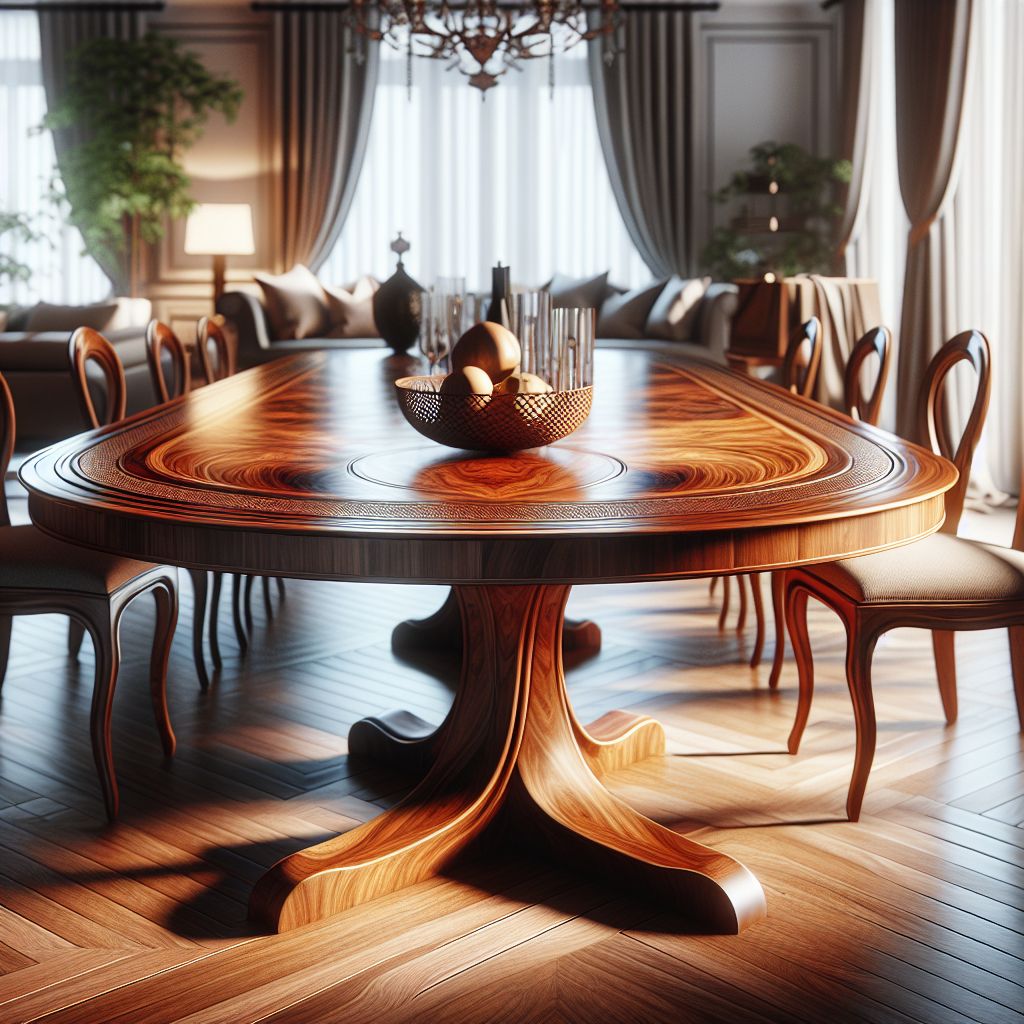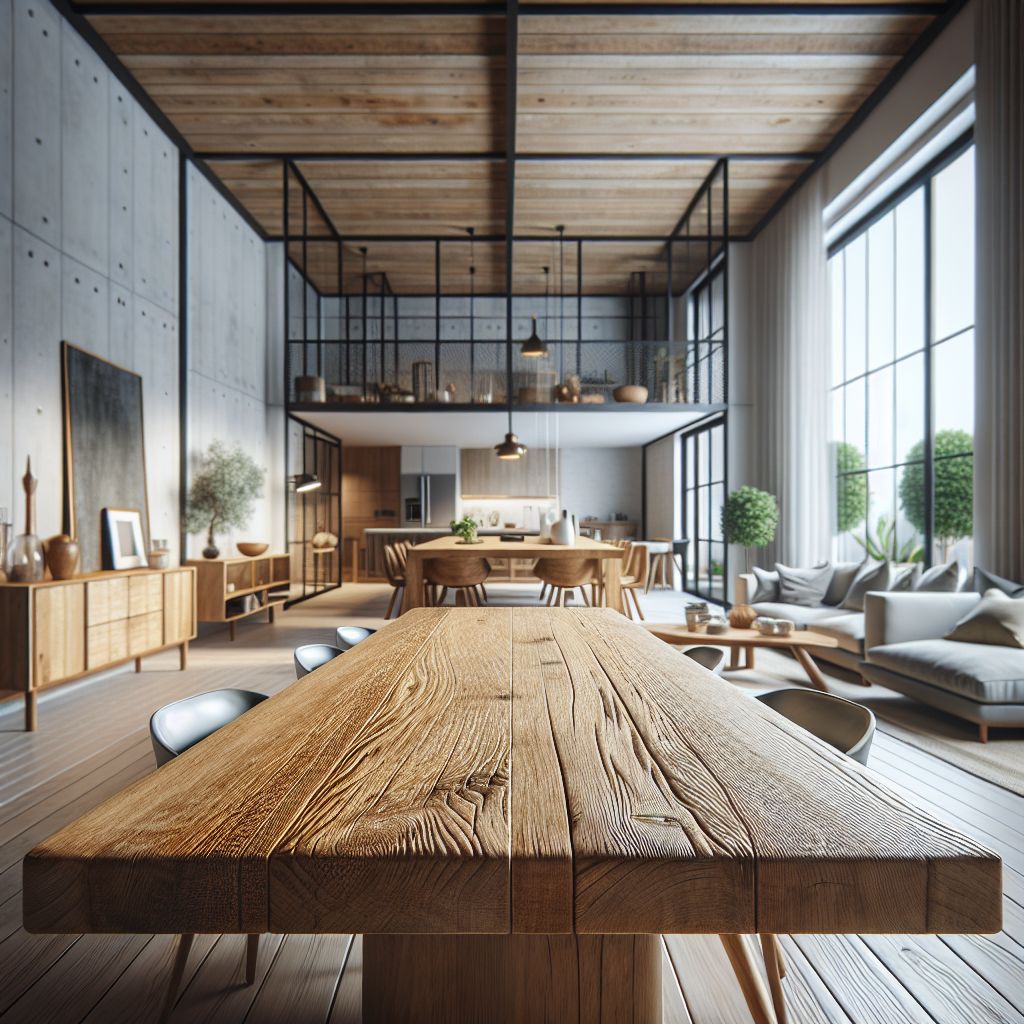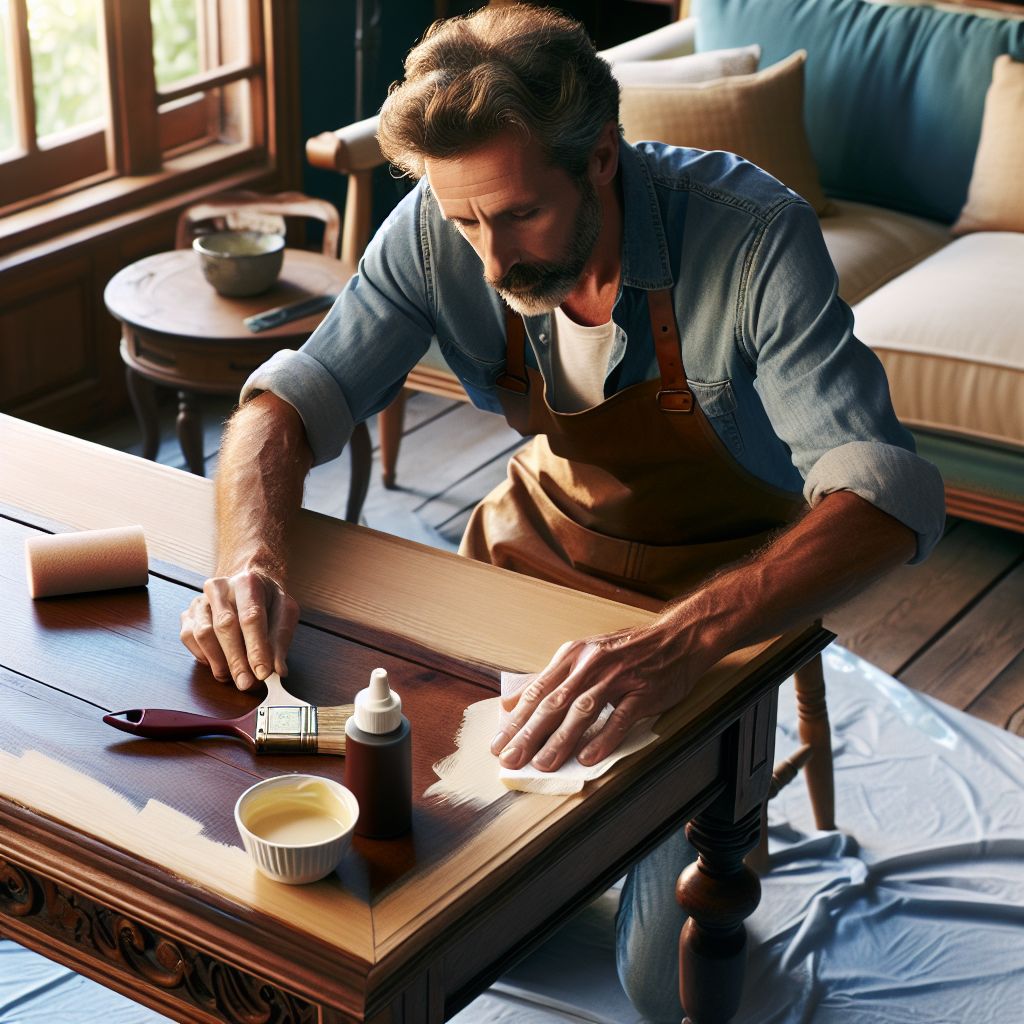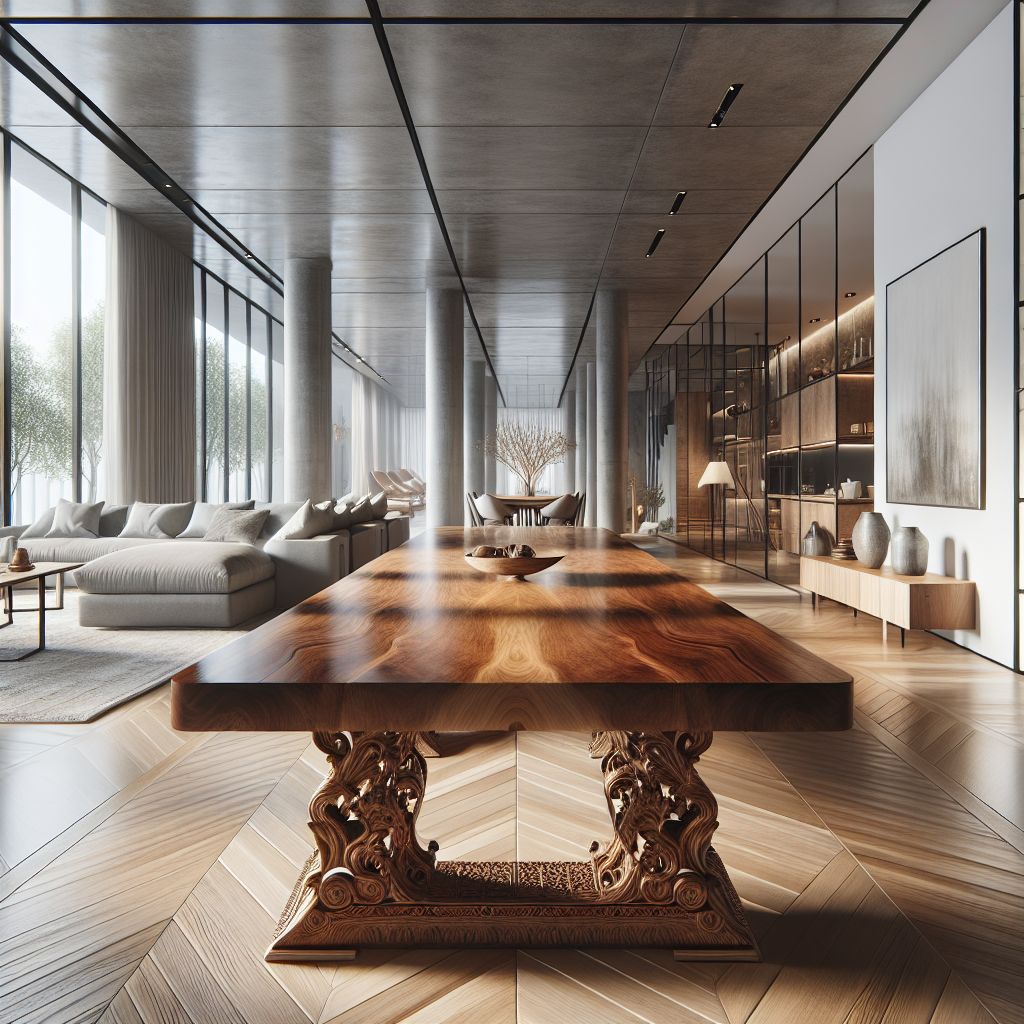
Key Takeaways
- Refinishing a wood table can be more cost-effective than buying a new one, often costing as little as $20–$120 if done DIY.
- DIY refinishing allows for personal customization, letting you choose your desired look and finish.
- Professional refinishing might be necessary for complex projects, but it comes with a higher cost.
- Regular maintenance after refinishing extends the life and beauty of your table.
- It’s essential to consider the time, effort, and potential challenges before starting your refinishing project.
Why Refinish Your Wood Table?
Let’s start with the why. Refinishing your wood table can be incredibly rewarding. Not only do you get to put your personal stamp on it, but you also get the satisfaction of seeing a piece of furniture come back to life under your hands. It’s about preserving history, saving money, and expressing your creativity.
Bringing Back the Sparkle
Think of that wood table of yours as a diamond in the rough. Over time, tables can lose their luster, but that doesn’t mean their story is over. With a little elbow grease and the right approach, you can restore its original shine—or even give it a new one that reflects your personal style.
Saving a Piece of History
Every table has a tale to tell. Maybe it’s where your family has gathered for meals for generations, or perhaps it’s a vintage find that whispers of past dinners and conversations. Refinishing allows you to preserve these memories and keep the table as a tangible link to the past.
The Pros of Table Refinishing
Refinishing wood tables isn’t just a labor of love; it’s a practical choice too. Here are some of the benefits that might just tip the scales for you:
Sustainable Charm
When you choose to refinish, you’re making a green choice. Instead of contributing to the cycle of buying and discarding, you’re giving an existing piece a second chance. This not only reduces waste but also gives you a unique piece that’s full of character.
Cost-Effectiveness
While the initial cost of a new table might be tempting, refinishing can save you money in the long run, often costing as little as $20–$120 if done DIY. Instead of shelling out hundreds or even thousands for a new table, refinishing allows you to create something beautiful at a fraction of the cost.
Unleashing Creativity
Perhaps one of the most exciting aspects of refinishing a table is the creative freedom it offers. You get to choose the colors, finishes, and techniques that will make your table truly yours. Whether you’re going for a rustic farmhouse look or a sleek, modern finish, the sky’s the limit.
Restoration of Beauty
Over time, wooden tables can become worn, scratched, or faded. Refinishing allows you to restore the table’s original beauty, bringing out the richness of the wood grain and enhancing its overall appearance.

Cons to Consider Before You Start
Before you roll up your sleeves, let’s talk about the flip side. Refinishing a wood table can be incredibly rewarding, but it’s not without its challenges.
Time and Effort Required
Firstly, it’s a time-consuming process. Stripping, sanding, staining, and sealing a table takes patience and effort. If you’re short on time or prefer instant gratification, this might not be the project for you.
Potential for Unexpected Challenges
Be prepared for surprises. Once you start stripping away years of finish, you might find damage you didn’t expect. This could mean more repairs and a longer timeline than you planned for.
Now that you have a better understanding of what refinishing entails, let’s dive deeper into the process and explore your options for giving that old wood table a new lease on life.
Selecting Your Refinishing Method: DIY Vs Professional
So you’ve decided to refinish your table. Great! The first step is to choose how you want to tackle the project. Are you going to go the DIY route, or is this a job for a professional? Your decision will depend on the complexity of the project, your skill level, and your budget.
DIY – The Basics
If you’re a hands-on person with time to spare, DIY refinishing can be incredibly satisfying. It allows you to control every aspect of the process and can be a great learning experience. Plus, it’s usually the more budget-friendly option.
Professional Refinishing – When to Call in the Experts
On the other hand, some tables might need a little more TLC than you can provide. If your table has intricate carvings, severe damage, or you’re looking for a flawless finish, it might be time to call in the professionals. They have the tools and expertise to handle tricky refinishing jobs.

The Refinishing Process Step-By-Step
Whether you decide to DIY or hire a professional, it’s good to know what the refinishing process entails. Here’s a step-by-step guide to help you understand what’s involved.
Gathering Your Materials
Before you start, make sure you have all the necessary materials on hand. You’ll need:
- Chemical stripper
- Sandpaper (in a variety of grits)
- A putty knife or paint scraper
- Wood filler (if there are any gouges or deep scratches)
- Stain or paint
- A top coat (like polyurethane)
- Protective gear (gloves, goggles, and a mask)
Step 1: Stripping off the Old Finish
The first real step in refinishing your table is to remove the old finish. Apply a chemical stripper according to the manufacturer’s instructions, and use a putty knife or paint scraper to gently remove the bubbled finish. It’s a bit messy, but it’s important to get down to the bare wood.
- Apply the stripper evenly across the surface.
- Wait for the finish to bubble up.
- Scrape away the old finish, being careful not to gouge the wood.
- Clean the surface with mineral spirits to remove any leftover stripper.
After stripping the finish, you’ll likely notice that the wood looks a bit dull and lifeless. That’s perfectly normal, and it’s just setting the stage for the next step.
Step 2: Sanding for a Smooth Base
Sanding is next, and it’s all about creating the perfect base for your new finish. Start with a coarser grit sandpaper to remove any residue or remaining bits of finish and work your way up to a finer grit to smooth out the surface.
Step 3: Applying New Stain or Paint
Once your table is smooth and clean, it’s time to apply your new finish. If you’re staining the table, choose a stain that complements your home’s decor and apply it with a brush or rag. For painting, select a paint suitable for wood furniture and roll or brush on a thin, even coat.
- Test the stain or paint on a hidden spot to make sure you like the color.
- Apply stain with a brush or rag, following the grain of the wood.
- For paint, use a foam roller or brush for a smooth finish.
- Let the stain or paint dry completely before applying additional coats if necessary.
Remember, it’s better to apply multiple thin coats than one thick one. This helps prevent drips and ensures an even finish.
Step 4: Protective Top Coats for Longevity
Once your stain or paint has dried, protect your hard work with a top coat. Polyurethane is a popular choice because it’s durable and comes in various finishes, from matte to high gloss. Apply it with a brush or spray can, and let it dry completely.
- Choose the right finish for your desired sheen.
- Apply the top coat evenly, avoiding drips.
- Allow it to dry completely before using the table.
With the right top coat, your table will be able to withstand daily use and look great for years to come.

Options for Preserving and Enhancing Wood Tables Without Refinishing
Preserving the beauty of your wood table doesn’t always require a full refinishing project. Let’s explore alternative options to rejuvenate, protect, and enhance your table’s appearance without the need for extensive refinishing efforts. From simple coverings to regular maintenance routines, discover practical solutions to keep your wood table looking its best.
If you’re not planning to refinish your wood table but still want to give it a fresh look or protect it, you have several options:
- Use Tablecloths or Placemats: Covering your table with a tablecloth or placemats can protect it from spills, scratches, and heat damage. There are many styles and materials available to suit your preferences and decor.
- Table Runners: A table runner can add style and protection to your table without covering the entire surface. They come in various colors, patterns, and materials, allowing you to change the look of your table easily.
- Coasters and Trivets: Placing coasters under drinks and trivets under hot dishes can prevent watermarks and heat damage on your table’s surface.
- Polishing: Regularly polish your wood table with a suitable wood polish or wax to maintain its shine and protect it from minor scratches. Be sure to follow the manufacturer’s recommendations for the best results.
- Protective Pads: Using felt or rubber pads under objects placed on the table can prevent scratches and dents.
- Repositioning: If possible, consider moving your table to a location where it’s less likely to get damaged, such as away from direct sunlight or high-traffic areas.
- Regular Cleaning: Clean your table regularly with a soft cloth or mild wood cleaner to remove dust, dirt, and debris that can accumulate and cause damage over time.
- Touch-Up Markers or Pens: If your table has minor scratches or blemishes, you can use touch-up markers or pens specifically designed for wood to camouflage them.
- Varnish or Sealant: Applying a clear varnish or sealant can protect the wood from moisture and stains without changing its appearance significantly.
- Decorative Accessories: Incorporate decorative elements such as vases, candles, or centerpieces to distract from any imperfections on the table’s surface.
By incorporating some of these options into your table care routine, you can maintain its appearance and protect it from damage without the need for refinishing.

Addressing Wear and Tear
Once your table is beautifully refinished, you’ll want to keep it looking its best. Regular maintenance is key. Dust it with a soft cloth to avoid scratches, and clean up spills immediately to prevent water marks or stains. Use coasters and placemats to protect the surface from heat and moisture. If you notice a scratch or nick, touch it up promptly to prevent further damage.
But even with the best care, life happens. If your table does get damaged, don’t panic. Many minor issues can be fixed with a bit of touch-up stain or paint. For more significant wear and tear, you might need to sand down the area and reapply a top coat. With a little attention, your table can stay looking great for a long time.

Frequently Asked Questions
What Type of Finish Is Best for a Dining Room Table?
Choosing the right finish for your dining room table depends on your personal preference and the level of durability you need. A polyurethane finish is tough and resistant to spills and scratches, making it ideal for tables that are used frequently. For a more natural look, a tung oil or linseed oil finish can be beautiful, but they require more maintenance. Consider your lifestyle and how much wear your table will see when deciding on a finish.
Can You Refinish a Table Without Stripping It?
If the existing finish on your table is still in good condition, you might be able to get away with a simple refresh rather than a full strip-down. Clean the table thoroughly, then lightly sand the surface to help the new finish adhere. Apply a new top coat of finish for a fresh look. This approach won’t work if the current finish is damaged or if you want to change the color of the wood, but it’s a quick fix for tables that just need a little boost.
Remember, this method is a shortcut, not a substitute for a thorough refinishing if your table needs more serious attention.
How Often Should You Refinish a Wood Table?
The frequency of refinishing depends on the table’s use and exposure to wear and tear. A dining room table that’s used daily might need to be refinished every 5 to 10 years, while a decorative side table in a low-traffic area might go much longer. Keep an eye on the finish—if it starts to look dull or worn, or if the wood is getting damaged, it’s time to refinish your dining table.
Is It Possible to Refinish a Wood Table on a Budget?
Yes, you can definitely refinish a wood table on a budget! If you’re willing to put in the work yourself, you can save a lot of money. Look for deals on materials and supplies, or see if you can borrow tools from friends or family. Be creative with your finish choices—sometimes the less expensive options can look just as good as the pricier ones. With a little ingenuity, you can give your table a beautiful makeover without breaking the bank.
What Are the Latest Trends in Table Refinishing?
Table refinishing trends come and go, but the focus on sustainability and personalization is here to stay. People are loving the look of natural wood grain, so clear finishes are popular. Painted tables are also in, with bold colors making a statement. Techniques like distressing and whitewashing can add character and a shabby chic or farmhouse feel to your table. Whatever trend you choose, make sure it reflects your personal style and fits with your home’s decor.
In conclusion, refinishing a wood table is a worthwhile endeavor that can save you money, let you express your creativity, and give you a sense of accomplishment. With the right approach and a bit of effort, you can transform an old or worn table into a stunning piece of furniture that will be cherished for years to come. So roll up your sleeves, gather your materials, and get ready to make some sawdust. Happy refinishing!





Leave a Reply